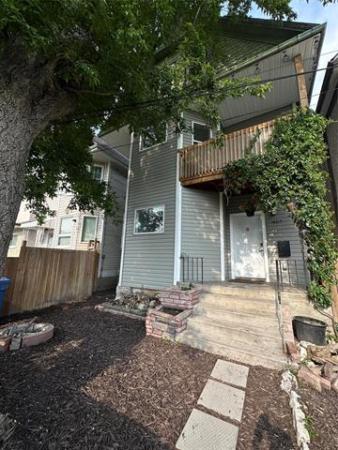QUESTION: I have a problem with the front steps of my house, which are 10 years old and are made of poured concrete. The steps are in excellent condition, except for a few scalded and pockmarked areas caused by the application of de-icing agents over the past few winters.
The damaged areas are mainly unsightly and minor in nature. To prevent the damage from becoming a bigger problem, I have patched some of the areas with a topping agent, Top N Bond, which adhered well to the existing concrete with an excellent colour match.
My problem is that I can no longer find a product to match the colour of the steps. They have changed the colour of the first product that I used and the patch is now a much darker grey and looks very unsightly. I have gone to several lumber and hardware stores in search of properly coloured patching compounds, to no avail. It appears now that I may have to cover the entire steps if I hope to get rid of the look of the unsightly patches.
I would appreciate any suggestions you may have, including the best way to resurface or cover the entire steps. Thank you for any advice you might be able to give me.
George Hodgson, Portage la Prairie
ANSWER: I applaud your efforts to take measures to prevent a small, mostly cosmetic issue from turning into a large one. Your question illustrates not only the efforts for good maintenance, but also the challenges many homeowners face. Most homeowners would simply slough off the patching until the spalling on the steps became severe, or cover the stairs with cheap carpeting, which would accelerate the deterioration due to the absorption of moisture by the carpet.
Unfortunately, patching concrete to match the existing colour is a hit-and-miss proposition. You were probably lucky to accomplish the match the first time around, but I have also experienced your frustration when material suppliers change products or they are no longer carried by retailers. I would recommend putting your efforts toward finding a better solution to the regular patching, rather than looking for the perfect product to match the colour.
My concern with the increasing need to patch the damaged concrete surface of your steps is to maintain a rough surface that will prevent a slip hazard. Most thinset patching compounds are not designed to allow application with a brushed surface. They can become quite smooth on top, which may increase the slip hazards that you are trying to avoid with your ice-removal compounds. It may be counterproductive to patch minor imperfections caused by the ice-removal products only to make the surface more slippery. You should be able to find de-icing products that won't deteriorate the concrete when applied, but that will not help with the slip hazards of the smooth patches.
Despite your expressed reservations about covering the entire steps, that may be the best solution to solving your cosmetic concerns, my slip-hazard worries, and preventing a quick return of the surface damage. However, compete re-surfacing with concrete patching compounds rarely provides a satisfactory product. In my opinion, patching the small areas of deterioration, followed by a finishing product or paint is better. There are paints manufactured for concrete application with slip resistance built in or fine sand or grit may be sprinkled on the wet paint to prevent falls. The paint will serve the dual purpose of preventing water penetration and absorption by the damaged concrete surface and help with slip resistance.
While painting is acceptable, many homeowners are opting for a newer solution to this age-old dilemma. There are several products available at home centres and other retailers that provide a more durable finish with increased slip protection. They are applied in several layers and often mimic a stone or masonry surface. The product names often suggest this stone or granite finish and come in various colours. The benefit of these products is that the multi-layered approach ensures proper adhesion to the concrete. There is often a primer coat followed by one or more finish coats. This built-up method of installation gives added depth to the finish, increasing the cosmetic appeal.
There are also contractors who re-surface concrete with a variety of different products and methods, but I have little experience with these and reliability may vary. It might be a good idea to call one or two of these for quotes to see what is available and balance it against the cost of the do-it-yourself finishes. Unfortunately, cost is about the only drawback of many of the home kits and some can be relatively high, compared to normal paint, if you have a large step. I am certain that installation of this type of product is within your abilities, as you have already tackled difficult concrete patching in the past.
As previously stated, the concern you have over colour matching the concrete patch is a cosmetic rather than functional concern. While patching is very important to prevent further deterioration, I suggest you either live with the unsightly patches or cover the entire stairs and landing with a high-quality finish to improve both the look and durability of the concrete surface.
Ari Marantz is the owner of Trained Eye Home Inspection Ltd. and the president of the Canadian Association of Home & Property Inspectors -- Manitoba (www.cahpi.mb.ca). Questions can be emailed or sent to: Ask The Inspector, P. O. Box 69021, #110-2025 Corydon Ave., Winnipeg, MB. R3P 2G9. Ari can be reached at (204) 291-5358 or check out his website at www.trainedeye.ca
trainedeye@iname.com



